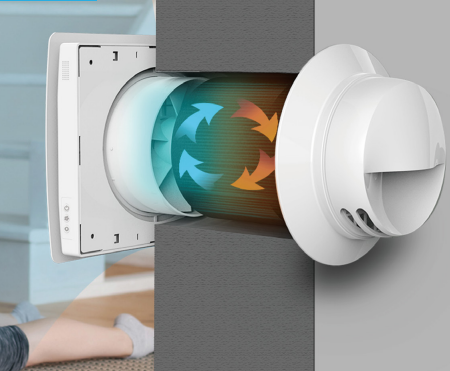A Practical Guide to HRV Maintenance
Wiki Article
The All-Inclusive Guide to the Uses of Heat Recovery Ventilation in Modern Buildings
Heat Recovery Ventilation (HRV) systems stand for a substantial development in constructing technology (HRV Heat Recovery Ventilation). They supply an approach for exchanging stagnant interior air with fresh outside air while decreasing energy loss. This method not just enhances interior air top quality but likewise adds to energy effectiveness in both household and commercial structures. Comprehending the different applications and benefits of HRV can reveal its vital function in modern-day layout and sustainability initiatives. The effects of this technology are worth discovering betterComprehending Heat Recovery Ventilation Solutions

Lots of contemporary buildings focus on power efficiency, comprehending heat recuperation air flow (HRV) systems is important for maximizing interior air quality and reducing power intake. HRV systems function by transferring heat from stale indoor air to inbound fresh air, effectively keeping comfy indoor temperatures while minimizing power loss. These systems contain a heat exchanger, fans, and ductwork that help with the circulation of air. Throughout winter months, HRV systems capture and reuse warmth from the outward bound air, while in summertime, they can help cool inbound air. By constantly exchanging air, HRV systems also lower humidity and the focus of interior toxins. Appropriate installment and maintenance of HRV systems are vital for their performance and efficiency in enhancing total building performance and convenience.
Benefits of Heat Recovery Ventilation
Heat recovery ventilation systems supply many benefits that boost both power effectiveness and interior air high quality in modern-day buildings. By catching and recycling energy from exhaust air, these systems substantially decrease heating and cooling expenses, bring about lower energy consumption. Additionally, they keep a consistent circulation of fresh outdoor air, decreasing the risk of interior air toxins and allergens. This continual exchange aids control moisture degrees, stopping mold and mildew development and making sure a much healthier living setting. In addition, HRV systems add to sustainability objectives by reducing general carbon footprints. Their ability to enhance ventilation without compromising thermal convenience makes them a beneficial enhancement to modern structure layout, advertising both financial and eco-friendly benefits.Applications of HRV in Residential Buildings
As home owners significantly focus on energy efficiency and indoor air quality, the applications of warmth recuperation air flow (HRV) systems in residential structures have become more prevalent. HRV systems are particularly valuable in tightly sealed homes, where maintaining fresh air circulation is essential for preventing dampness accumulation and indoor toxins. They efficiently move warm from outgoing stagnant air to incoming fresh air, lowering energy prices related to heating & cooling. Furthermore, HRVs can boost comfort degrees by managing humidity and temperature level. They are additionally adaptable for different household styles, consisting of single-family homes and multi-unit structures. In general, incorporating HRV systems sustains sustainable living practices while making sure a much healthier indoor setting for residents.HRV in Commercial and Industrial Setups
In industrial and industrial setups, the implementation of warm recuperation air flow (HRV) systems has actually become significantly important for maximizing power efficiency and preserving air quality. These systems efficiently move heat from exhaust air to inbound fresh air, lowering the need for extra heating or cooling. This not only lowers energy prices yet also adds to sustainability initiatives. Industries such as production, warehousing, and office complex benefit greatly from HRV systems, as they help regulate temperature and humidity levels, making sure a comfy and effective environment. Moreover, HRV systems help in getting rid of contaminants and excess dampness, boosting indoor air top quality. As guidelines around air top quality come to be more stringent, the fostering of HRV innovation is most likely to expand, making it a vital part of contemporary industrial and industrial infrastructure.Future Fads in Heat Recovery Ventilation Modern Technology

Often Asked Questions
How Does Heat Recovery Ventilation Influence Indoor Air Quality?
Heat recovery ventilation substantially enhances indoor air quality by continually trading stagnant interior air with fresh outdoor air while recuperating energy. This process decreases contaminants, preserves suitable moisture levels, and ensures a much healthier atmosphere for residents.Can HRV Systems Be Installed in Existing Structures?
HRV systems can indeed be installed in existing structures. Retrofitting may require modifications to ductwork and air flow formats, yet it substantially improves energy efficiency and interior air high quality, making it a practical option for older frameworks.What Maintenance Is Required for HRV Equipments?

Are There Specific Climates Where HRV Is More Reliable?
Heat recovery ventilation systems are especially effective in environments with considerable temperature differences between seasons. These systems optimize power effectiveness by recovering heat from exhaust air, making them suitable for both cold and moderately warm environments.How Do HRV Equipments Affect Power Bills?

Report this wiki page